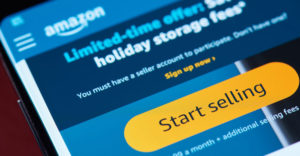Why aren’t potential customers purchasing from your business online? Oftentimes, it’s a guessing game for brands. Understanding the drivers and obstacles that impact consumers’ decision-making processes is critical.
But how can brands successfully do this with a lack of understanding of consumers’ complete online journeys?
Following are four barriers to creating a successful customer journey that drives engagement and conversions:
1. Lack of competitor insight. Brands don’t have a clear understanding of what is leading consumers to purchase directly from competitors online or purchase competing products on e-commerce sites. This is a missing piece of the puzzle when it comes to consumers’ online journeys — and it causes brands to have to guess where to effectively reach these potential customers before they convert with competitors.
2. Escalating data privacy requirements. Data privacy and changing regulations limit the ability to gain a complete picture of consumers’ behaviors online and restrict the capability to clearly know consumer segments. This impedes the potential to be effective with personalization in messaging, placement and creative — all of which are critical in building brand trust and loyalty in a highly competitive landscape.
3. Missing consumer motivators to action. Today, brands often lack visibility into what motivates a consumer to take action online and the enablers that reduce the time from intent to conversion.
4. Reduced marketing budgets. With budget cuts taking place across the board, even brands that in the past had higher budgets can’t afford to just spread their marketing messages everywhere. Brands that don’t know the most effective place to focus their reduced marketing resources are effectively throwing spaghetti at a wall to see what may stick.
Building a winning journey is about meeting consumers at the right place, with the right content, the right number of times to drive conversions. Brands today need to be super-efficient with their marketing spend and direct their marketing efforts only to where they will actually make a difference and enable them to reach — or even exceed — their sales KPIs.
How can they do this?
Analyze Competitors
To understand where opportunities exist, retailers must acquire insights into what is happening online with consumers outside of their own data. This can be accomplished by utilizing technologies that reverse engineer consumer purchase journeys on competitors’ assets.
Identifying the early phases of consumer journeys with competitors that actually led consumers to convert with them is especially important so retailers can discover where they may influence them in their favor instead while also generating more ROI on their marketing dollars.
Understand Factors in the Market
In addition to studying their path-to-purchase with competitors, it’s critical to know where consumers go for information early in their online shopping process. Retailers can uncover hidden opportunity gaps by mapping out the complete landscape of customer journeys using data science algorithms.
When consumers are searching for home appliances, for example, they may visit a variety of affiliate review websites, but not all of them have an impact on their selection. Imagine being able to determine which of them are worth investing in since they are linked to end conversions with competitors, as opposed to those that are part of the trip but not worth your marketing spend because they will not yield ROI.
Determine Purchase Attribution Gaps
It’s vital for retailers to identify the points in the customer journeys where they’re most vulnerable to losing customers with high purchase intent, determine which gaps are critical, and eliminate those that don’t affect sales.
A real-time understanding of purchase attribution gaps that retailers have against their competitors, from a variety of perspectives (journey stage, segments, purchase behaviors, topics, etc.) is essential. These kinds of data sets can assist merchants in determining where their marketing efforts are most likely to lead to consumer acquisition and conversion.
What is a real-world example of how this would look?
Using a solution that reverse engineers consumers’ purchase journeys, it’s possible to identify a specific group of shoppers’ path-to-purchase, in this case, with Sonos and Amazon Alexa rather than JBL.
Couples who recently moved and want to learn about home audio systems are searching Google for terms such as “what to know about speakers when buying for a house.” leading them to Lifewire and Digital Trends articles “5 Factors to Consider Before Buying Stereo Speakers” and “How to buy speakers: A beginner’s guide to home audio,” among others.
After interacting with these articles, consumers continue their journey by searching for terms such as “wireless home audio for music,” leading them to a New York Times review article “The Best Multiroom Wireless Speaker System,” where JBL isn’t mentioned. Finally, after interacting with this article, consumers finish their journey converting with Sonos and Amazon Alexa via affiliate links redirecting them to purchase on Amazon.
For JBL, this presents an opportunity to increase brand awareness and user acquisition for this consumer segment before they purchase from competitors at the places that will impact the conversion decision.
JBL can do this with an affiliate partnership with The New York Times, for example, to incorporate reviews on JBL’s products and affiliate links within relevant articles to attract high intent consumers, increase conversions and disrupt them before interacting with competitors. The company could also target these consumers by using display ads on Lifewire and Digital Trends within relevant sections and articles like those mentioned above.
Competitive Intel for E-Commerce Businesses
Consumer purchases, both in-store and online, are on the decline, according to recent earnings releases. However, e-commerce remains strong. In 2022, global e-commerce sales are estimated to exceed $5 trillion. This figure is expected to rise in the coming years, demonstrating that e-commerce is becoming an increasingly important sales channel.
Given these considerations, it’s now more critical than ever for e-commerce merchants to be laser-focused on customer acquisition. There are solutions available that provide insights into competitors, market factors and purchase drivers when it comes to consumers’ complete online journeys.
With a clear understanding of consumers’ interactions with competitors and other websites, as well as what motivates them to buy, retailers can identify growth opportunities for their business. They can then best direct their marketing investments to build successful customer journeys that drive conversions and loyalty for their business while minimizing costs.
















































Social Media
See all Social Media